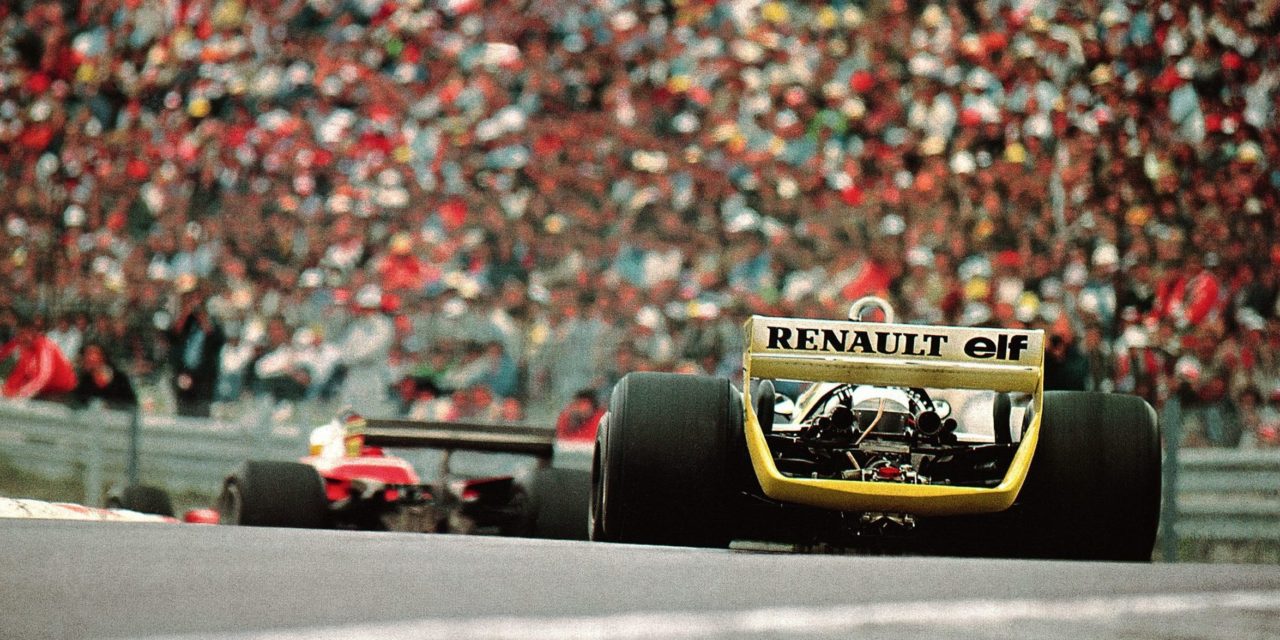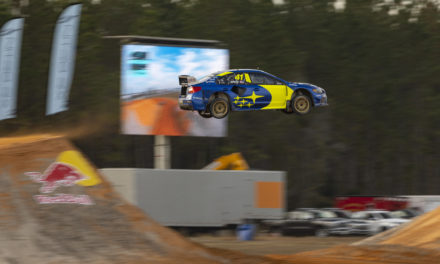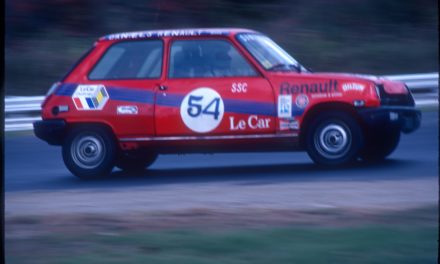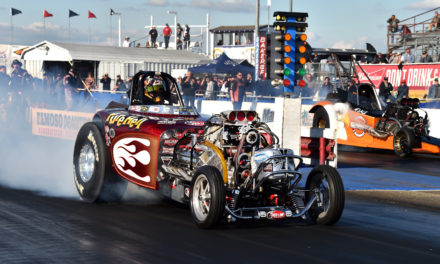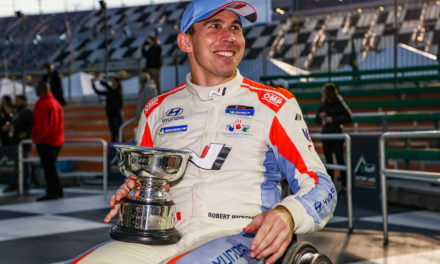The 1979 French Grand Prix is evidence that it only takes two drivers to make race. The battle featured ground-effect cars with turbo engines (much like the upcoming French GP this weekend). By the time they waved the checkered flag, though, nobody was talking about the technology.
The yellow Renault nose cone featuring a blue #16 was so close to the gearbox of Gilles Villeneuve’s Ferrari it looked as if the two were fused together. Villeneuve had already lost the lead to Renault driver Jean-Pierre Jabouille, after leading the opening 46 circuits. Now, with 10 of the 80 laps left, third-place-running René Arnoux was hot on his tail, and the Ferrari’s tires were finished.
The French-Canadian Villeneuve had desperately wanted, no, needed to win round eight of the championship, the French Grand Prix. After the season’s first four races he was leading the championship. Then, teammate Jody Scheckter won rounds six and seven.
Entering France, Villeneuve found himself ten points behind Scheckter. Winning—and claiming the nine points for a win in those days—would re-energize his challenge.
But it wasn’t just Villeneuve’s South African teammate standing between him and victory. While the new-for-1979 Ferrari 312 T4 had won four of its first five races, the French Grand Prix was a matter of homeland pride for Renault.
Two years earlier, the French car maker joined Formula 1 with a then-radical 1.5-liter V6 turbocharged engine. Every other car in the field was a tried-and-tested normally aspirated 3.0-liter. For good reason, too: the forced-induction Renault was quickly dubbed the “yellow tea pot” because it frequently went up in a cloud of steam.

Renault teammates Jean-Pierre Jabouille (R) and René Arnoux (L) Photo: Daniel Janin/AFP/Getty Images
Over the intervening season-and-a-half, Renault—with its experienced lead driver Jean-Pierre Jabouille—started to get on top of its turbo troubles. Then, three races prior to the French Grand Prix, Renault launched its new ground-effect RS10 chassis that used air flowing under the body to suck to the track (like many of the other cars in the field).
A month’s break between round seven and the French GP had enabled Renault to refine the RS10 further. The firm even tried a race distance test at Dijon, but failed because Jabouille was exhausted after 60 laps.
That hadn’t deterred the lanky Frenchman. Throughout practice and qualifying his new RS11 had been the quickest thing around the 2.36-mile track. Arnoux and Jabouille occupied the front row, ahead of Villeneuve.
While turbo power enabled Renault to rocket down Dijon’s long start-finish straight, Ferrari had a weapon of its own in Villeneuve.

Gilles Villeneuve in a Ferrari 312T3 at Dijon, French GP, 1979. Photo: GP Library/Universal Images Group via Getty Images
The weather on race day dawned cool, perfect for a turbo car. And both Renaults had extra head supports to counter the withering G forces that ground-effect cars inflicted on drivers’ necks around Dijon.
Initially, it was a Ferrari that led. Arnoux almost stalled his Renault off the line, but even a decent getaway wouldn’t have kept the scarlet Ferrari behind him. Villeneuve’s launch was so quick that even Jabouille, who had a clean start, couldn’t keep the lead. The Ferrari stayed in front for 46 laps.
After 30 laps Jabouille’s Renault was tucked right behind the Ferrari. Villeneuve knew the game was up. “For the second half of the race, my car was all over the place,” he admitted after the GP. Jabouille eased past the Ferrari at the end of the pit straight. The race was done.
Or was it?
René Arnoux’s grand prix had been far less serene than his Renault teammate’s. After that start-line stumble he’d dropped to ninth place.

René Arnoux in a Renault RS10 at Dijon, French GP, 1979. Photo: GP Library/Universal Images Group via Getty Images
With a quick car, talent to burn, and home fans revving him up, he overtook Alan Jones and Jacques Laffite on lap two. Seventh. A lap later Niki Lauda fell prey. Sixth. Passing Jean-Pierre Jarier within two more laps gave him fifth. He took Nelson Piquet for fourth on lap 10 and Scheckter for third four laps later.
At that point, Arnoux had yet to score a point in Formula 1 competition but he wasn’t going to sit back and bank his first podium finish. The Frenchman from Grenoble, a gutsy little fighter, put his head down and charged forward.
Spurred on by the increasingly raucous home crowd and the visibly shortening gap to Villeneuve, the former mechanic and then-fan-favorite set his sights on second. With nine laps left Arnoux recorded the fastest lap of the race, a full second quicker than the next fastest driver. Jabouille was likely too far away to catch, but Arnoux could see Villeneuve’s car ahead.
With two laps to go, the noise of racing engines was drowned out by cheering from the stands, as their man Arnoux stormed ahead of Villeneuve. Surely the Ferrari on its worn Michelins was vanquished.
Villeneuve never surrendered easily.

GP Library/Universal Images Group via Getty Images
He noticed that Arnoux, despite his supposed turbo horsepower advantage, wasn’t pulling away. The Renault was struggling with fuel pickup. At the start of lap 79, to the surprise of everyone, including Arnoux—who wasn’t expecting the tired Ferrari to pass him back—Villeneuve overtook in a cloud of tire smoke.
But that wasn’t the end of it. On lap 80, Arnoux stole second back. The pair banged wheels and Arnoux momentarily left the track surface. That slight loss of momentum enabled Villeneuve back into the lead. They banged wheels again, cornering as if welded together. Somehow, Arnoux snuck back through.
It seemed settled but, inexplicably, the Renault ran wide into the hairpin and Villeneuve, braking later than late, was through. There was no denying the French-Canadian now. The Ferrari crossed the line two tenths of a second ahead of Arnoux.

GP Library/Universal Images Group via Getty Images
“No, I’m not sad to be third,” Arnoux said. “I enjoyed the race very much and Gilles drove a fantastic race,” Those in attendance thought so too. As the pair completed their cooldown lap, the drivers each raised their arms to salute the other. The crowd roared.
The battle for second had been so exciting it completely outshined the first grand prix win for Jean-Pierre Jabouille and Renault. More importantly, it was a debut win for a turbocharged engine in the Formula 1 World Championship. It was the first of many. Sadly, battles as intense, fair, and exciting as Villeneuve and Arnoux’s remain a rarity.

Daniel Janin/AFP/Getty Images

